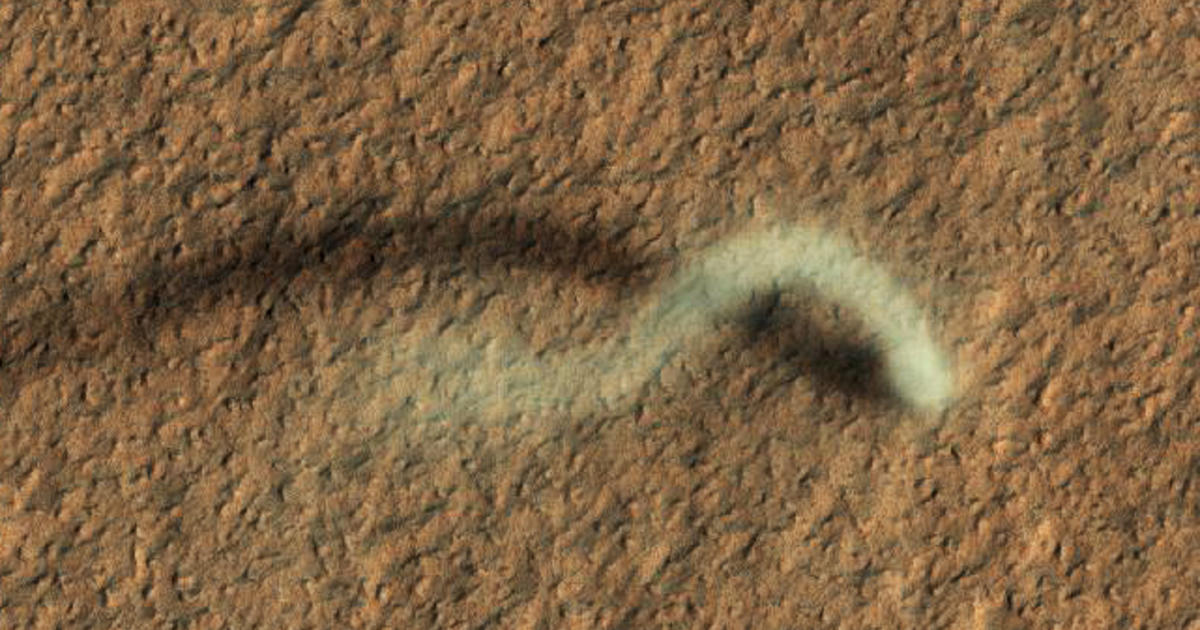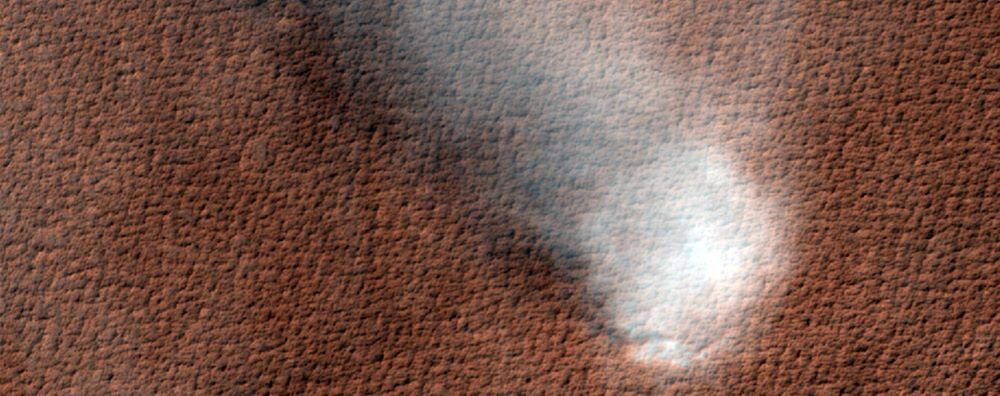Scientists continue to study Martian vortices, which are called “dust devils”. They have a considerable influence on the atmosphere of the red planet, but their formation also depends on many factors.

“Dust devils” on Mars
Recently, NASA has received from the High Resolution Imaging Experiment (HiRISE) camera, which is on board the Mars Reconnaissance Orbiter spacecraft, an image of a “dust devil” that wanders on the surface of Mars. This name was given to small vortices that exist not only on the red planet, but also on Earth.
This time, the spacecraft, which has been operating in Mars orbit for many years, has seen “dust devils” on the Syria Planum, although it has repeatedly seen them in other places before, for example, on the Amazonis Planitia, which is located in the southern hemisphere of the planet, in the Ganges Chasma, which is part of the Mariner Valley system, as well as near the Nili Fossae.

In general, the “dust devils” on Mars are very similar to those that arise on Earth. The only difference is that they can reach a height of 20 km. Despite this, scientists have been studying them carefully for many years.
What interesting things can Martian vortices tell?
As on Earth, the root cause of the “dust devils” on Mars is the Sun. It heats the air above the surface of the planet and it begins to rise, forming something like streams-columns. Gradually, the air in them begins to rotate and this movement becomes faster and faster. The wind begins to raise dust, which pulls higher and higher.
Despite the fact that dust devils are relatively small in size, they have a considerable impact on the planet’s atmosphere. It is known that a significant part of the dust in it owes its occurrence to these vortices. And this is enough to significantly affect the climate of Mars.
In addition, the “dust devils” leave behind noticeable traces and furrows on the surface of the planet. Therefore, by studying them, scientists can learn a lot not only about the atmosphere of Mars, but also about how its landscapes are formed.
It is known that large-scale dust storms on Mars erase the traces of “dust devils”. Therefore, analyzing them, it is possible to understand how often these global atmospheric phenomena occur in certain areas of the planet.
“Dust devils” on Mars are of considerable importance for the functioning of missions on the surface. Over the past 20 years, they have repeatedly passed near various rovers. At that moment, the wind helped to clean the solar panels from dust, which covered them over time and blocked the work.
Influence of the axis of rotation of Mars
One of the global issues related to the “dust devils” on Mars is linked to the influence on their formation of the tilt of the axis of the planet. On Earth, it varies between 22.1° and 24.5° with a periodicity of 41 thousand years and is the main factor that affects the change of seasons and the formation of vortices.
However, such a small change in the tilt of the axis is typical only for the Earth. For our planet, it is stabilized by the Moon. Mars also has two moons, but they are very small and cannot stabilize the angle of the axis of rotation. Therefore, it can vary from 15 to 45 degrees.
Recently, scientists have already proved that such changes can greatly affect the climate of the planet and make it much more like Earth. It is quite possible that this also affects how “dust devils” are formed.
According to phys.org
Follow us on Twitter to get the most interesting space news in time
https://twitter.com/ust_magazine

